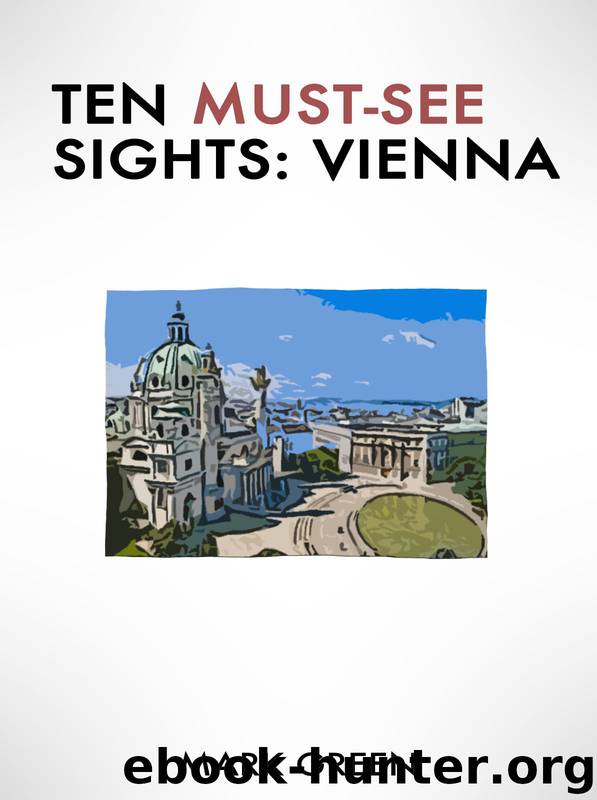Ten Must-See Sights: Vienna by Mark Green

Author:Mark Green [Green, Mark]
Language: eng
Format: azw3
Published: 2013-02-22T16:00:00+00:00
6. Museum of Natural History
The Museum of Natural History in Vienna, locally known as the Naturhistorisches Museum Wien, displays a collection of historically significant artifacts. The structure housing the said artifacts takes up a floor space of a little less than a hundred thousand square feet. Although the best experience would still involve taking a physical tour of the museum, its website does offer a virtual video tour along with a relatively extensive overview of the facility and its artifacts. The Museum of Natural History in Vienna is widely considered to be one of the world’s most important museums. The collection of the artifacts displayed therein began a little over two centuries ago.
Built simultaneously with the Kunsthistorisches Museum on Vienna’s Ringstraße, construction on the two structures began in the year 1872. The project lasted for a total of 19 years, and was finally completed in the year 1891. The twin design was made according to the shared vision of Karl Freiherr von Hasenauer and Gottfried Semper.
From the time of their completion, it took approximately 8 years before the museums were ready to be opened to the eagerly awaiting public. Located across one another in the Maria Therese Square, it was originally intended for the twin museums to hold the House of Habsburg’s incredibly extensive collection.
The museum’s collection of insects is several centuries old. In the year 1793, Franz I purchased the rather large scientific collection from Joseph Natterer, Sr., who was father to Johann Natterer, a prominent zoologist. Several years later, the museum would expand this collection by purchasing another set of specimens from Johann Carl Megerle von Mühlfeld, the same person who would later become the collection’s first curator. During his term, Megerle purchased a large Gundian collection made up of European specimens. This collection, along with those purchased earlier, were lost due to the Hofburg fire, which occurred on the month October in 1848. However, an 18 year expedition to Brazil led by Johann Natterer greatly enhanced the existing collection in 1835. About 60,000 specimens were displayed in the Brazilian museum. Because this museum was situated in the Harrach' house, it escaped any damage from the said fire.
Just before the dawn of the 1860’s, the SMS Novara, a frigate that had just returned from travelling around the world with Johann Zelebor and Georg Ritter von Frauenfeld, brought with it even more specimens for the collection. Several people worked on these new specimens. The group included Alois Friedrich Rogenhofer, R. Felder, C. Felder, Ignaz Rudolph Schiner, Gustav Mayr, Henri Louis Frederic de Saussure, Friedrich Moritz Brauer, and Ludwig Redtenbacher.
The museum’s present organization dates back to 1876. Since this time, there have been several notable individuals that have had notable contributions to the museum’s illustrious reputation. These elite group includes Anton Handlirsch, Maidl Brauer, Carl Tschek, Franz Friedrich Kohl, Josef Johann Mann, Josef Emanuel Fischer von Röslerstamm, Hans Rebel, Rogenhofer Rebel, Karl Holdhaus, and Ganglbauer Holdhaus.
An inventory taken in the year 2011 showed that the Naturhistorisches Museum Wien houses a total of more or less 30 million historical objects.
Download
This site does not store any files on its server. We only index and link to content provided by other sites. Please contact the content providers to delete copyright contents if any and email us, we'll remove relevant links or contents immediately.
Spell It Out by David Crystal(36082)
Underground: A Human History of the Worlds Beneath Our Feet by Will Hunt(12050)
A Year in the Merde by Stephen Clarke(5366)
Venice by Jan Morris(2546)
Claridge's: The Cookbook by Nail Martyn & Erickson Meredith(2380)
My Paris Kitchen: Recipes and Stories by Lebovitz David(2269)
A TIME OF GIFTS by Patrick Leigh Fermor(2173)
The Plantagenets by Dan Jones(2061)
Welcome to the Goddamn Ice Cube by Blair Braverman(2015)
The Finnish Way by Katja Pantzar(1959)
Top 10 Prague (EYEWITNESS TOP 10 TRAVEL GUIDES) by DK(1956)
From Russia with Lunch by David Smiedt(1947)
Bang Poland: How To Make Love With Polish Girls In Poland by Roosh V(1944)
The Isle of Mull by Terry Marsh(1914)
A TIME TO KEEP SILENCE by Patrick Leigh Fermor(1880)
Rick Steves London 2018 by Rick Steves & Gene Openshaw(1840)
Insight Guides Experience Tokyo by Insight Guides(1832)
A Taste of Paris by David Downie(1830)
Merde in Europe by Stephen Clarke(1739)
